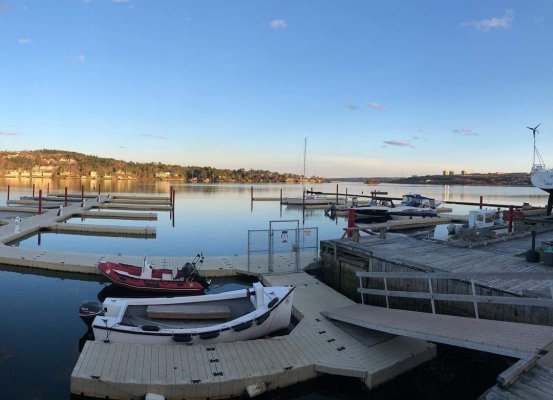Today I visited the C-Dory factory in Bellingham, WA. I looked over the 25' Crusier and liked what I saw. But what really caught my attention was the Tomcat, a 25' catamaran. And lucky me, one of the owners, Mike, offered to take me out onto the bay for a ride in a demo boat. It was windy with a 2-3 chop, yet the Tomcat just bumped along at an easy 8-10 knots. There was some slapping but overall the boat was steady with zero wallowing. On the return, with the wind and waves on the stern, we picked up the speed and the ride was unlike anything I've experienced (I only know full-displacement trawler boats). We were cruising along at 20 knots with the twin 150 Yamahas running at between 2,700-3,000 rpm. They were remarkably quiet! This boat was set-up with an aft helm station, which made it easy to maneuver inside the marina and for docking, even in the wind. I am sold on these small cats


 I guess that's one argument against reading in the bathroom when in a hurry.
I guess that's one argument against reading in the bathroom when in a hurry.
